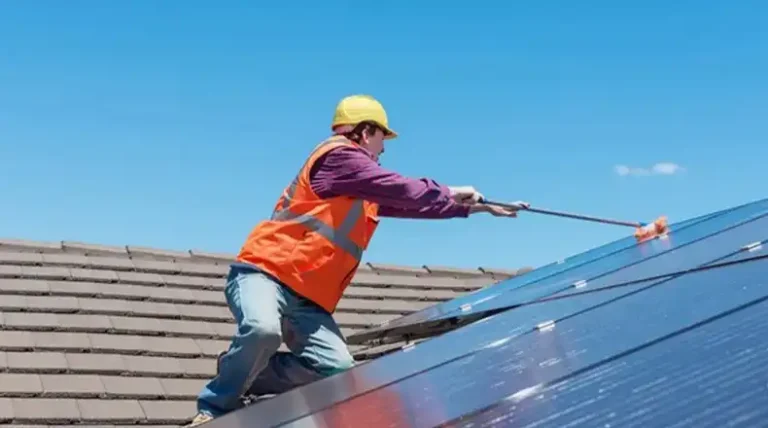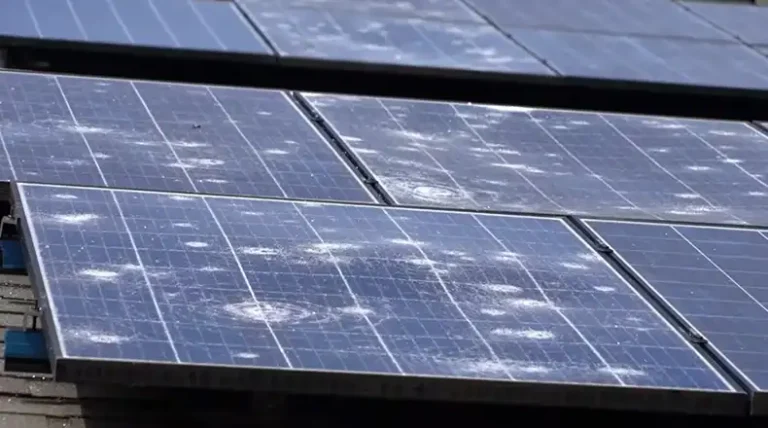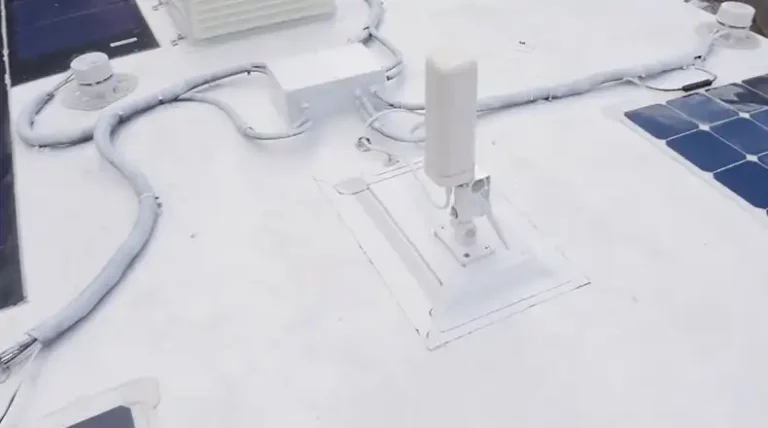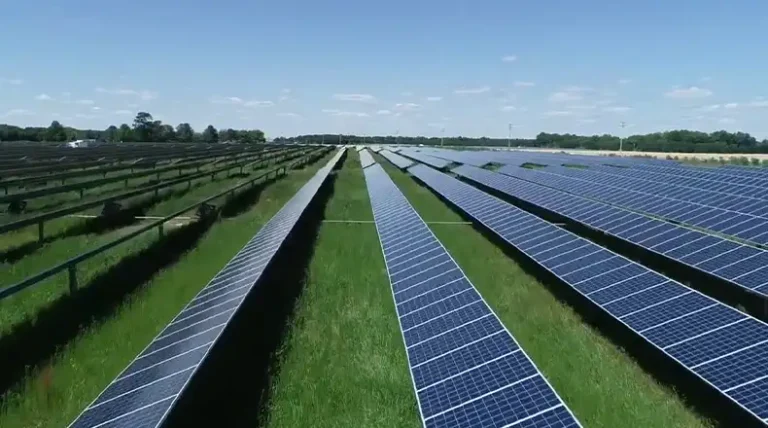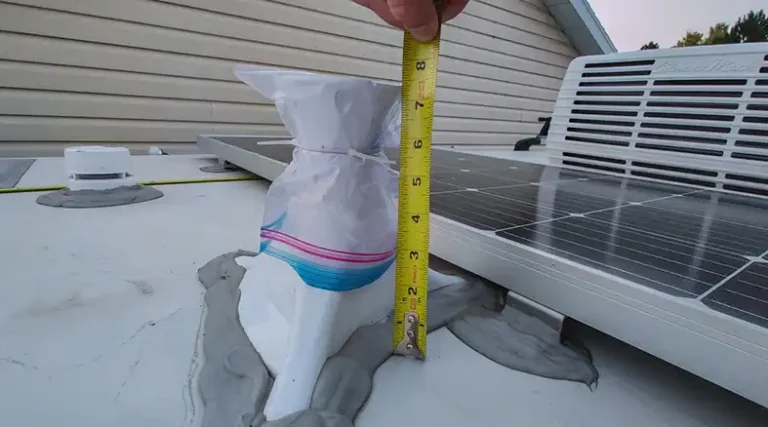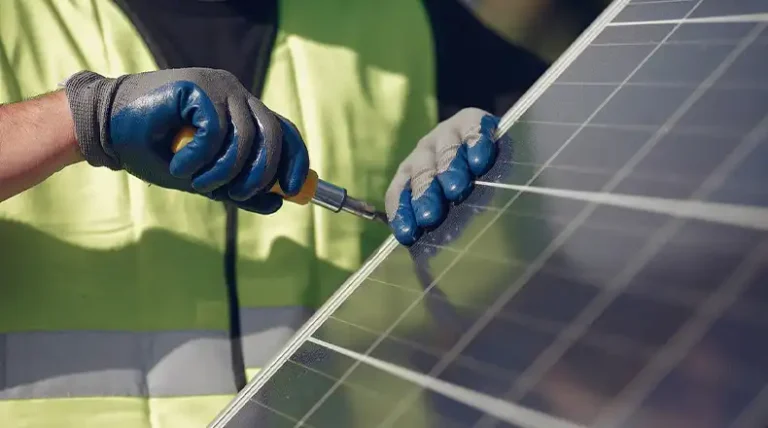Why Can’t We Put Solar Panels in The Desert?
As we all know, sunlight is the lifeblood of solar panels, so it might seem logical to place them in deserts – the sunniest and hottest places on Earth. After all, according to solar panel theory, they should perform best in such environments. However, there are some valid reasons why this seemingly perfect solution isn’t as straightforward as it appears.
In this article, we’ll explore the challenges that make deserts less than ideal for large-scale solar energy production. So, be with me till the end and find out why solar panels aren’t put in the desert! Let’s begin then!
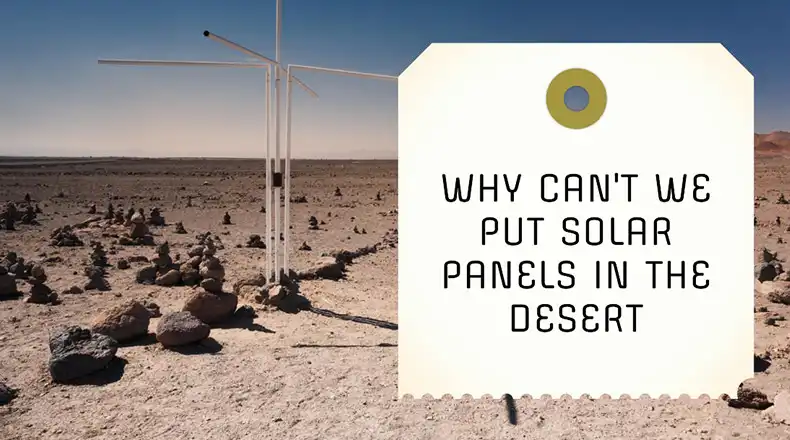
Reason 1 – Excessive Heat
One of the most significant challenges in setting up solar panels in deserts is the excessive heat. Solar panels are designed to operate within a specific temperature range, typically between 59°F and 95°F (15–35°C), where they achieve maximum efficiency. However, deserts like the Sahara can experience extreme temperatures, well beyond this optimal range.
The Sahara desert, for instance, has an average annual temperature of 86–90°F (30-40°C), which is already pushing the limits of solar panel performance. During the hottest months, temperatures can soar above 122°F (50–58°C), with the highest recorded temperature reaching a scorching 136°F (58°C) in Aziziyah, Libya. The Lut Desert in Iran is even more extreme, with temperatures reaching a staggering 159.3°F (70.7°C) in 2005, which is among the highest temperatures ever recorded on Earth.
When exposed to such excessive heat, solar panels experience a significant decrease in their power output and conversion efficiency. The high temperatures can also cause physical damage to the panels, such as warping, cracking, or degradation of the protective coatings and other components. This can lead to premature failure of the panels, reducing their lifespan and increasing maintenance costs.
Reason 2 – Sand Erosion
Another major challenge in building solar farms in deserts is the constant exposure to windblown sand. Deserts are known for their harsh, sandy environments, and this abrasive sand can cause severe erosion and damage to solar panels over time.
The constant bombardment of sand particles can gradually erode the surface of the solar panels, reducing their transparency and diminishing their ability to absorb sunlight effectively. This erosion can lead to a significant reduction in the energy output and efficiency of the panels.
Additionally, the accumulation of sand on the panel surfaces can block sunlight from reaching the photovoltaic cells, further reducing the energy output. To mitigate this issue, solar panels installed in deserts would require frequent cleaning and maintenance, which can be a logistical challenge and increase operational costs.
The abrasive nature of sand can also damage the delicate components of the solar panels, such as protective coatings, electrical connections, and other sensitive parts. This can lead to more frequent replacements and higher overall costs, making the long-term operation of solar farms in deserts financially challenging.
Reason 3 – Lack of Infrastructure
Deserts are typically remote and sparsely populated areas, lacking the necessary infrastructure to support large-scale solar farms. Building and maintaining these facilities require access to roads, water resources, and electrical transmission lines, which are often scarce or non-existent in desert regions.
Constructing the required infrastructure can be extremely costly and logistically challenging. It involves transporting materials, equipment, and personnel over long distances and dealing with harsh desert conditions, such as extreme temperatures, sandstorms, and rugged terrain.
Access to water resources is particularly crucial for solar farm operations. Water is needed for cleaning the panels to maintain their efficiency and for cooling systems that may be required to mitigate the impact of excessive heat. In desert regions, where water is scarce, obtaining and transporting sufficient quantities of water can be a significant challenge and add to the overall operational costs.
Furthermore, the lack of existing electrical transmission lines in remote desert areas means that new lines would need to be built to transport the generated electricity to population centers and industrial areas where the demand for electricity is high. Building these transmission lines over long distances can be a complex and costly endeavor, further increasing the overall cost of establishing solar farms in deserts.
Reason 4 – Electricity Loss while Transporting
Even if solar farms are successfully constructed in deserts, the generated electricity would need to be transported over long distances to reach population centers and industrial areas where the demand for electricity is high. This process can result in significant power losses due to the resistance in the transmission lines.
The amount of electricity lost during transmission is directly proportional to the distance it needs to travel. On average, solar electricity can lose 5% per 1,000 kilometers (621 miles) during transmission, which reduces the transmitted power distance by 20%. While modern transmission cables are designed to minimize losses, the sheer distances involved in transporting electricity from remote desert locations can still lead to substantial losses.
For example, if a solar farm is located 1,000 kilometers away from the nearest population center, it could lose up to 5% of the generated electricity during transmission. If the distance is extended to 2,000 kilometers, the losses could reach 10%, and so on. These losses not only reduce the overall efficiency of the solar farm but also contribute to higher operational costs, as more energy must be generated to compensate for the losses during transmission.
However, it’s worth noting that cable makers have made significant improvements in the quality and size of their systems, reducing the power losses to around 3% for every 1,000 kilometers. While this is an improvement, the losses can still be substantial for solar farms located in remote desert regions, far away from the areas where the electricity is needed.
End Notes
With ongoing research and innovation, we might just find ways to overcome these challenges and tap into the solar potential of desert regions. If you have any lingering questions or insights to share, feel free to drop them in the comments below. Together, we can continue exploring this fascinating topic and perhaps even contribute to sustainable energy solutions for the future. Thanks for joining me on this enlightening journey!

